
Winterson Prize 2017: Meet The Designers Part II
Each year we work with the student jewellery designers at Central Saint Martins in London, giving them an opportunity to experience designing with pearls for their final year collections.
We will be awarding the Winterson Prize 2017 to one of the students for ‘The Best Use of Pearls’ at the CSM Jewellery Awards Evening on 22nd June.
The BA Jewellery graduate collections are exhibited at CSM and open to the public from June 21st - 25th.
Here we feature the final part in a series of short interviews with designers from the CSM Jewellery 2017 show, including in this article - Maria Mungsommai, Ruhong Chen, Xiaoyu (Coco) Guan, Xindi Nie, Yanmi Lui and Yingping Shen.
Read about the other designers in Part I of this series and the winner of this year's prize.
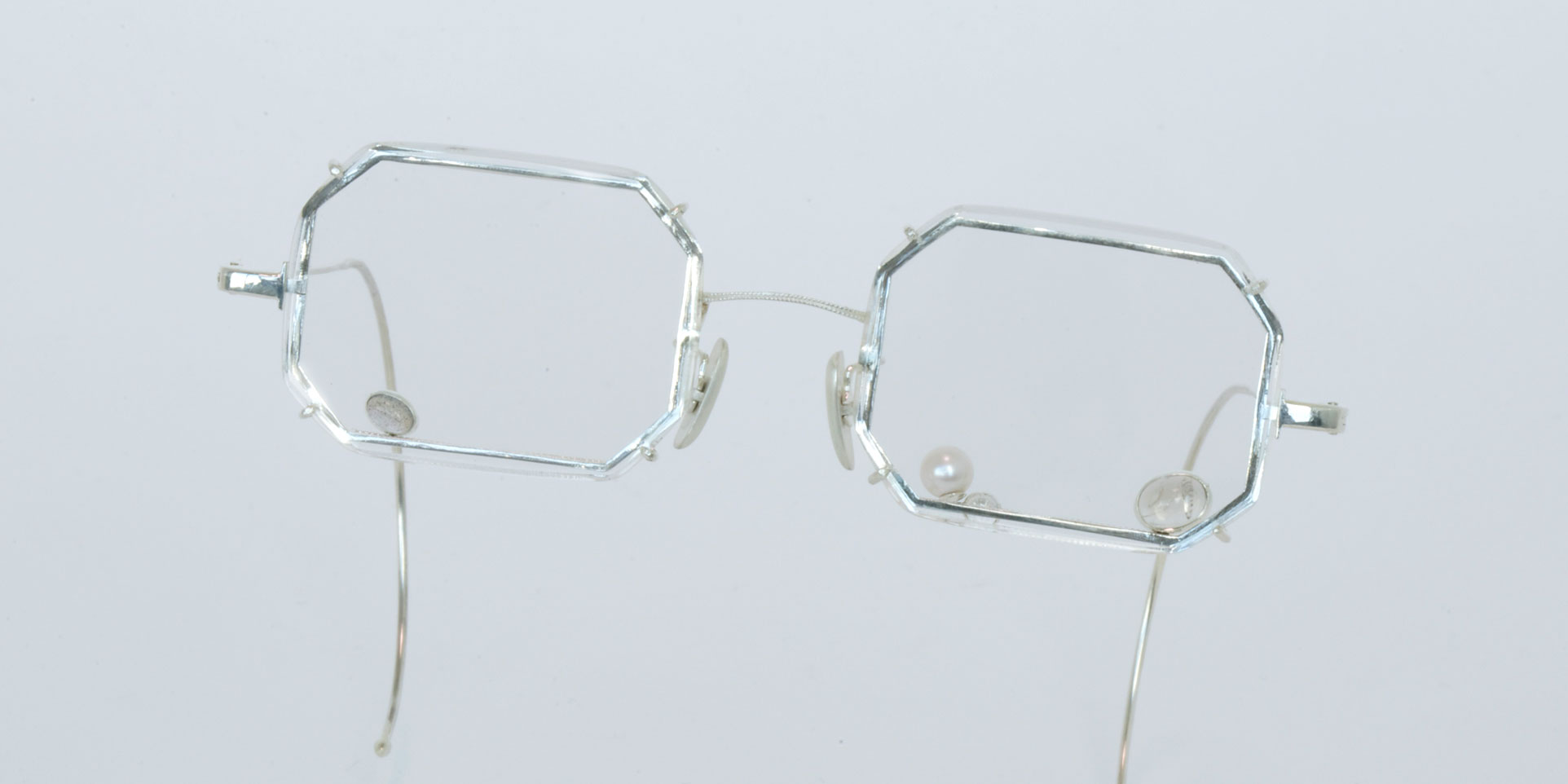
Maria Mungsommai
Tell us a little bit about yourself.
I'm from Thailand and I have lived in the UK for 7 years so far. I came from an academic background and London gifted me with the love for art. Growing up in two vibrant places, I have always been inspired by the eclecticism of both cities and the subject of psychology. Jewellery, for me, is very special. It's magical how such small objects can mean so much.
What was the inspiration for the 'Rose Glass' collection?
It started from a stroll down the jewellery bridge in Ponte Vecchio, watching people looking at fine jewellery window display and asking what is jewellery to them. When looking at fine jewellery such as an engagement ring, it's like there is an instant rose-tinted glass filter. Rose glass is about the romantic desire for fine jewellery. Seeing them and wanting them. Taking inspiration from window displays, for instance, the frame, the glass and the jewellery stand themselves, looking at how jewellery are presented. I wanted to create that romance of seeing jewellery placed behind a glass.
What do you find inspiring about pearls?
Pearls are really romantic in a sentimental way. For me pearls portray a true nuance of romance. Fragile, subtle, a beautiful imperfection. The lustre sort of resembles human skin as well. There's a softness to a pearl that can't be seen in other gemstones.
What have you discovered about working with pearls?
Every single one of them is unique. The dimples and colour differences in each one of them I find very beautiful. Handling them makes you feel instantly more elegant as well (hahaha).
Which designer or artist do you most admire?
There's so many! But if I have to choose I'd say I love the work of Louise Bourgeois and Raf Simons.
Who could you imagine wearing your jewellery?
Hmm.. I think they'll look good on Mia Goth.
What is it that makes a piece of jewellery a design classic?
Can I say whenever there's a pearl in the design? Haha. Well, I think a design is classic when there's some sense of subtlety in it.
What’s next for you after CSM?
I'm planning to do an MA in art business at Sotheby's.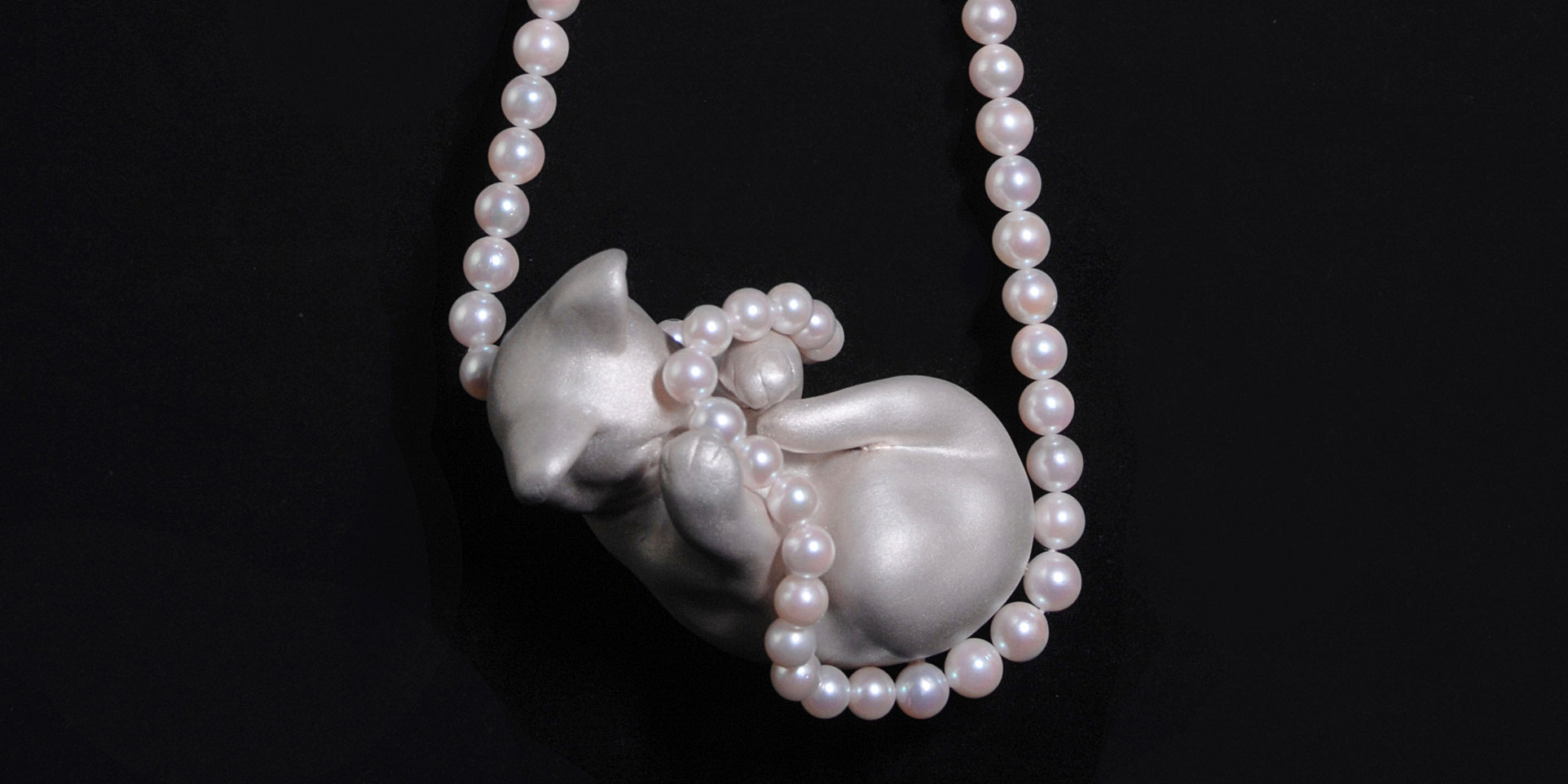
Ruhong Chen
Tell us a little bit about yourself.
I have a passion in art & design and have known that I will work within these area since I was a child. In high school, I studied for two years an A-level in Product design, photography and fine art. Then I studied foundation in CSM and luckily got into BA jewellery. Last year I meet Jewellery Master Catherine Mannheim and studied with her for one month.
What was the inspiration for the 'Ornaments and Pearls' collection?
My collection was started by the idea of conveying a moment of pause and the peacefulness within. Inspired by Edmund de Waal’s project with the same title 'White' (2015- 2016), my research started by looking at the quality of the colour white. I perceive white as being silent, a very powerful quality. And that is why I make all my collection mostly in a silver white finish.
My design has been playing with second-hand ornaments for example; little toys, house decorative adornments, as well as something I personally owned. Ornaments I gathered from second hand market are sentimental objects, carrying the element of memories. By taking away the color, reworking from the form of those ornaments, I have been thinking how memories and white color can both deliever a new perspective to perceive the present world and what was in the past.
Inspired by the Maisie Broadhead art installation ‘pearls’, I like to use the forms of pearl strands in my design so that they appear to have airiness and movement. Initially the use of pearls wasn’t the main focus. However soon my first piece was made, which is a sleeping kitten playing with a pearl necklace. I think it conceptually challenges the traditional use of pearl jewellery. The pearl necklace in history, as seen in most classical paintings, often stands for decorum, hierarchy status and luxury. Here the pearls are being disrupted by the kitten’s sense of playfulness. The sense of subversiveness is strong, and so I adjusted my design direction to focus on the use of pearls, especially pearl strands. Considering how it can interact with the ornament, and how it brings out the preciousness of silver.
What do you find inspiring about pearls?
Unlike a diamond, which often dazzling and sharp, the beauty of pearls is more subtle, natural and refreshing. I am inspired by its varied luster and colour, especially as it appears like a rainbow, and the pearl’s different shapes are also fascinating. Using pearls with precious metal, it can really transform the metal, bringing a new liveliness.
What have you discovered about working with pearls?
I discovered that there are lots of ways to use pearls, It could simply be attached by gluing, or it can be applied by stone setting techniques, stringing, wiring, beading, crocheting and so on. More complex techniques to use pearls doesn’t make the work more valuable, the value come from how the use of pearl links to the context of the jewellery and how it makes a story as a whole. The visual quality of purity from pearls is also my focus when I work with pearls.
Which designer or artist do you most admire?
For jewellery design, I admire Otto Kunzli with his minimalism and the use of a witty metaphor in his jewellery, for example the work ‘Gold makes you blind bracelet‘. The gold is concealed in black rubber, the shape forming a gold diamond ring that most people would have.
In fine art area, I like Henri Matisse for his art of strongly expressive human body forms, for example ‘the dance’, as well as his paper cut works that are energetic, and have a curiosity for wondering.
Who could you imagine wearing your jewellery?
Middle aged women who have studied or work in fashion or an art associated area. Having a sense of humor, passionate about life, appreciates the beauty of simplicity and enjoys wearing pearls.
What is it that makes a piece of jewellery a design classic?
Knowing the aim of the jewellery, to be open and true to it throughout the design. Inspiration is important but there are lots of refinements needed. A design classic jewellery arising from new ideas should have a personality like people, which gives an intimacy between the wearer and itself. Continuing traditional techniques and to innovate are also important.
What’s next for you after CSM?
Study a Master degree jewellery in the UK, also start up my own jewellery business.
View more of Ruhong's work here.
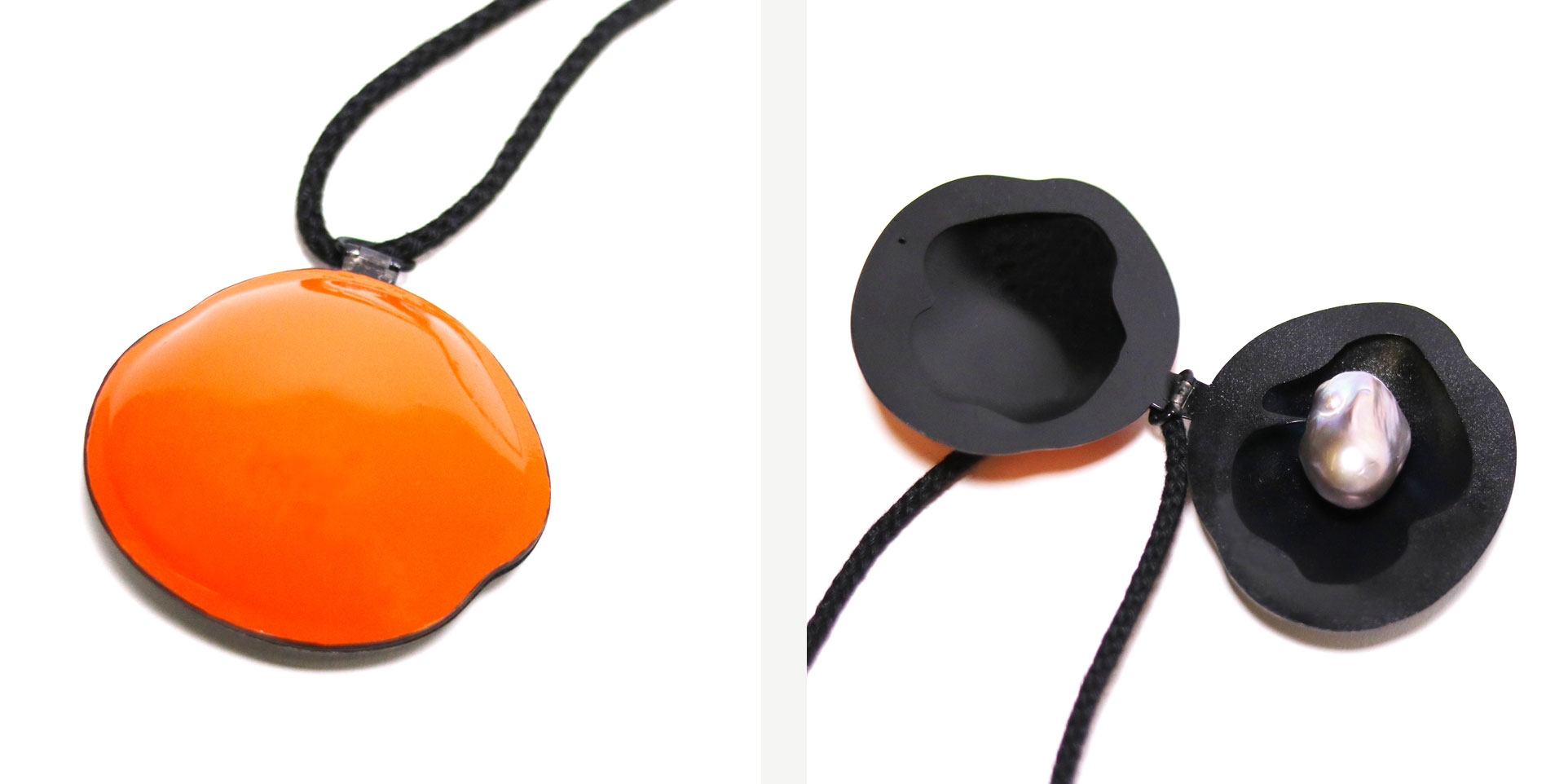
Xiaoyu (Coco) Guan
Tell us a little bit about yourself.
My name’s Coco. I’m a Chinese girl, staying in London for four years since my foundation course. I learnt Graphic & Communication Design three years in another University in China before, and then I came to CSM to study Jewellery design, which is my favourite major.
What was the inspiration for the 'Beans & Pods' collection?
The theme of this project is about beans and pods. Beans have long been interesting to me as a form and as a metaphor for positive, value, nourishment and potential. I’ve also been intrigued by how many different scales, shapes, textures and colors they come in. Due to the fact that we often eat beans in our daily life, I collected some different types of beans, such as mung beans, red beans and pea, thus, I want to use beans as a project starting point.
What do you find inspiring about pearls?
I’m interested in the shape of pearls. The surface of the pearl could be smooth and free of marks while the overall shape could be round, oval, pear-shaped, or even misshapen. For this project, I chose to use freshwater pearls, because I like the natural shapes. I feel they’re really like the real beans in the natural.
What have you discovered about working with pearls?
I feel quite good when I worked with them. It’s interesting to stitch pearls to metal.
Which designer or artist do you most admire?
My favorite jewellery designer is Peter Chang, who produces mainly jewellery in the form of bangles/bracelets and brooches. He uses a variety of methods to achieve the bright colors and bizarre shapes. The colors red and yellow were especially popular, and form a color combination often seen in Chang's work.
From his work, I started to understand and explore how colors work together, the responses color provokes in a viewer, and what color symbolizes in nature. For instance, for this project, I made my own color palette and started to overlay many layers of colors on the bean’s surface, meanwhile, I still keep the single color for some of them.
Who could you imagine wearing your jewellery?
I think most of female will love my woks, because of the colors. For the whole collections, I used a lot of bright color, as the aim was to bring people limitless happiness when they try or see my works. And it’s also the main meaning of my works. I hope people can feel happy and get lucky when they wear them.
What is it that makes a piece of jewellery a design classic?
I think it’s the meaning and story behind that piece. The appearance of a jewellery, the color, or the shape should be attractive for people to stop by, but when you understand the story behind it or what it really means, you will appreciate it forever.
What’s next for you after CSM?
I already got a MA Jewellery design offer from CSM. Therefore, I’ll still stay London to finish the course and learn more things.
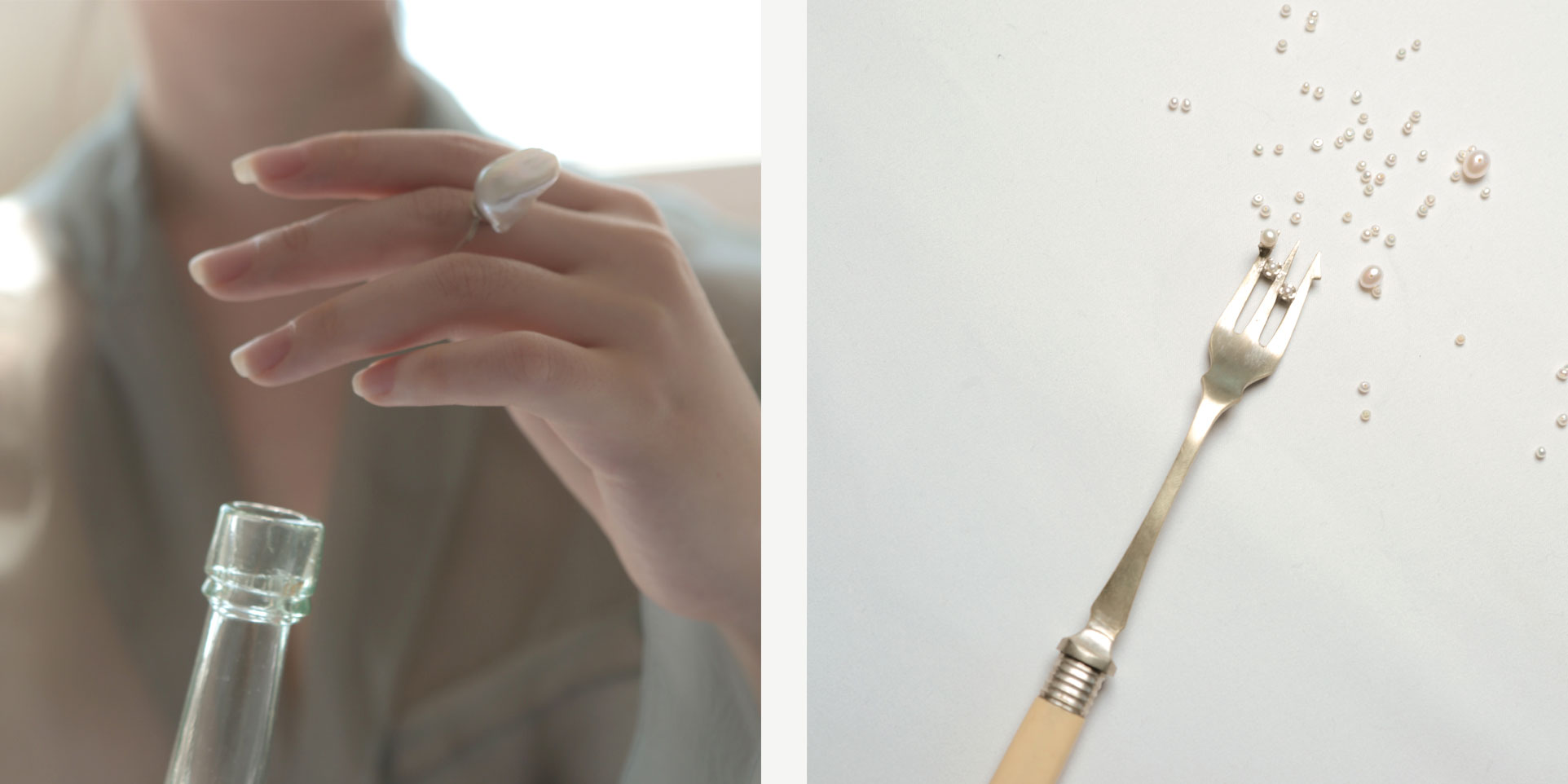
Xindi Nie
Tell us a little bit about yourself.
I’m 22 years old and interested in installation art pieces.
What was the inspiration for the 'Incidental Poetry' collection?
The integration of irrelevant objects fascinates me greatly with the sense of surrealism that is created by the process of clashing and combining. Such events occur accidentally all the time in our day to day lives, objects being turned into another form of existence which also serves an entirely different purpose.
On the other hand, does jewellery possess an ability to influence or even entirely replace the being of ordinary objects in a traditional manner?
What do you find inspiring about pearls?
Pearls are my favorite material, they are unique among other jewellery materials, such as metals and stones, as they are relatively softer and contains gentle sheen. Pearls play a essential role in my collection.
What have you discovered about working with pearls?
The techniques of using pearls is a different category compared with other jewellery techniques that I learned before. I was very impressed with the way of stringing pearls, and french wire finishing techniques.
Which designer or artist do you most admire?
Artist: Giorgio Morandi, Roni Horn, Lois Weinberger, Mark Manders
Designers: Reka Lorincz, Marc Monzo, Bernhard Schobinger, Hands Stofer
Who could you imagine wearing your jewellery?
I would like to think of my works as art pieces, which is a homage for Giorgio Morandi. His paintings inspired me a lot.
What is it that makes a piece of jewellery a design classic?
The concept behind the design makes a piece of jewellery meaningful and classic.
What’s next for you after CSM?
I’m applying for an MA course at this moment.
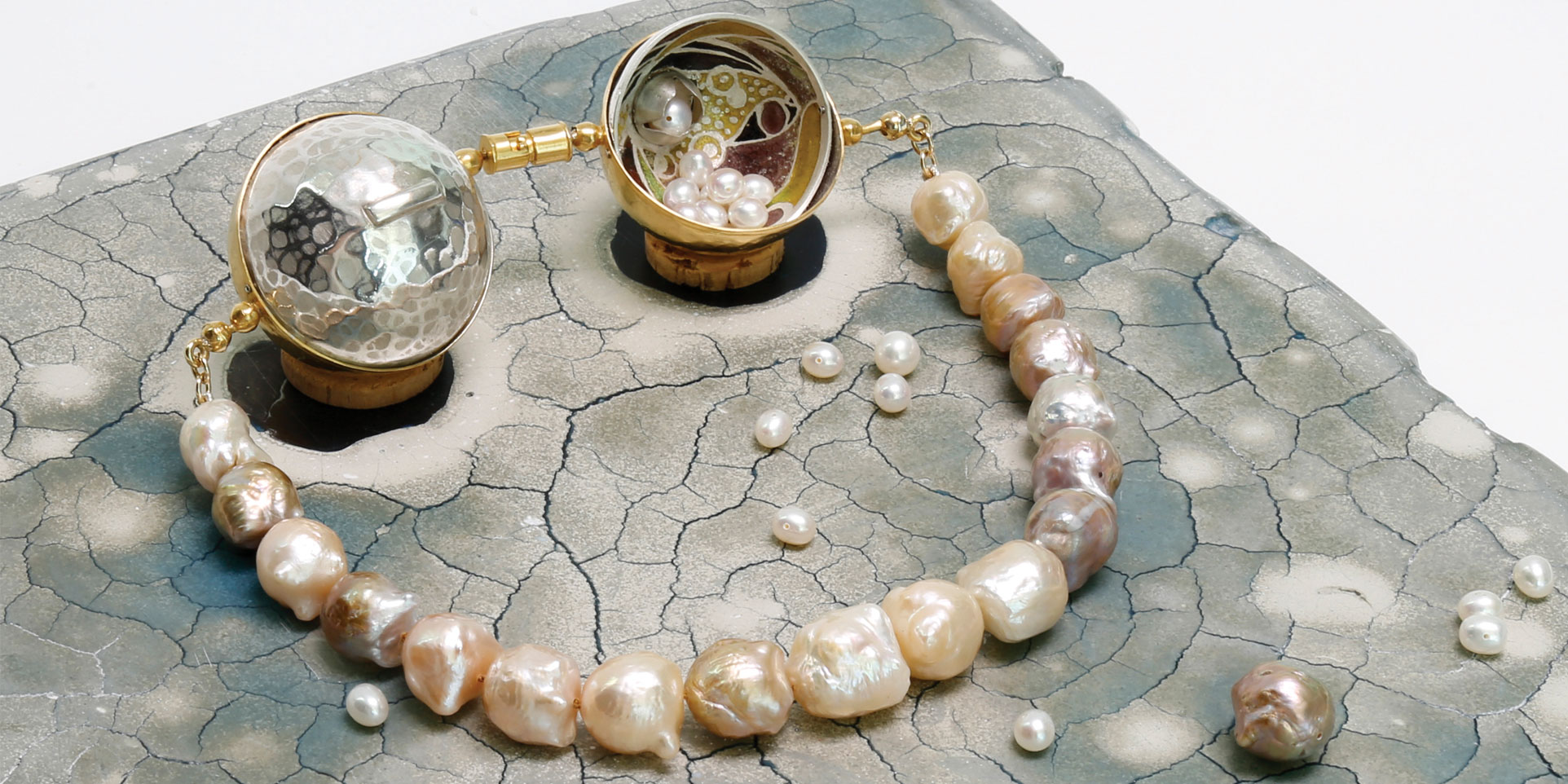
Yanmi Lui
Tell us a little bit about yourself.
I am always curious about things and I let my mind wander when I’m travelling.
What was the inspiration for the 'Modern Self-defence Armour & Weaponry' collection?
Initially, I am inspired by the culture of different types of martial arts that do and do not use weapons in self-defence, because this form of fighting is integral to many security-related professions e.g. hostess, guards, military training. I enjoyed researching the developmental process of creating a weapon and analysing its changing values in the progress of a modernizing society.
Secondly, Biomimicry: I find the natural design systems in organisms fascinating, especially at a very small scale in insect defence mechanisms.
What do you find inspiring about pearls?
Most defence mechanisms have sharp, warning shapes and textures. I chose to use the iridescent and ‘soft’ qualities of pearls as embellishments to counteract with ‘aggressive’ forms. The way that pearls are formed is a type of natural defence mechanism – molluscs use layers of iridescent nacre to wrap around the intruder, forming a pearl.
What have you discovered about working with pearls?
They are very versatile to work with.
Which designer or artist do you most admire?
Jackson Pollock (Abstract Artist)
Who could you imagine wearing your jewellery?
‘Cheeky’, playful people who like hidden surprises.
What is it that makes a piece of jewellery a design classic?
Memorable, stand-out elements in a piece of jewellery; something that is understood by a big audience. A technique that is shared and practiced by many people i.e. a class strand of pearl necklace is made from specific string knotting techniques.
What’s next for you after CSM?
Work to learn more about the industry hands-on, or if because of visa limitations, I am deciding to learn more about functioning systems on a Masters level.
View more of Yanmi's work here.
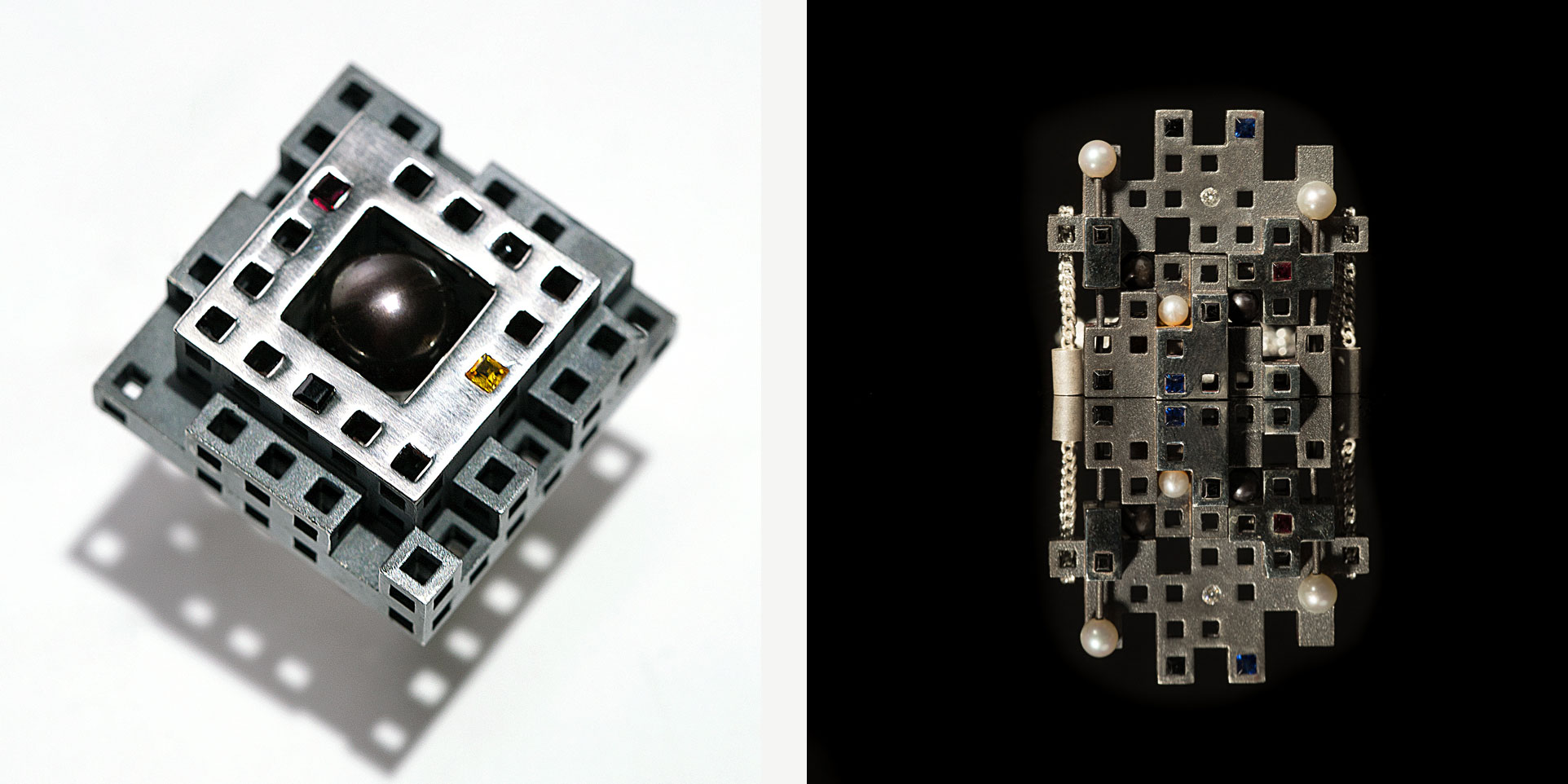
Yingping Shen
Tell us a little bit about yourself.
I am from China, I studied jewellery identification in China.
I like to combine other design elements into my jewellery, such as fashion and architecture. I think I don’t want to be an artist, I want to be a good jewellery designer in the future, making jewellery between fine and contemporary.
What was the inspiration for the 'Breathing' collection?
I was inspired by the cityscape. I saw the busy buildings in the city, and endlessly windows on the buildings, so many people working inside day by day. I wanted to express a fervent desire to escape from the city’s asphyxiating environment. I used different colours (black and white), different shapes, and some moving parts on the jewellery to express people's need to breathe. Pearls and precious stones express the people (precious) in the buildings.
What do you find inspiring about pearls?
This is my first time that I have used pearls in my jewellery.
I think jewellery with a pearl, and without a pearl are very different, with a pearl that can make a jewellery more feminine.
I think it is very good for my collection, because my collection is based on so many cubes and straight lines, it looks very masculine, but the use of round pearls can change this.
What have you discovered about working with pearls?
I bought some half drill pearls to work, and when I put pearls into the pins, around the holes, the pearls are very easy to break.
Which designer or artist do you most admire?
I like Renzo Piano, the architecture designer.
Who could you imagine wearing your jewellery?
I want to make some jewellery for everyone, unisex, and all ages.
What is it that makes a piece of jewellery a design classic?
I think contemporary jewellery needs a very good story or idea. And fine jewelry needs a good design and good material.
What’s next for you after CSM?
Find a job and make my own brand.
Image Credits:
With thanks to Yingping Shen

